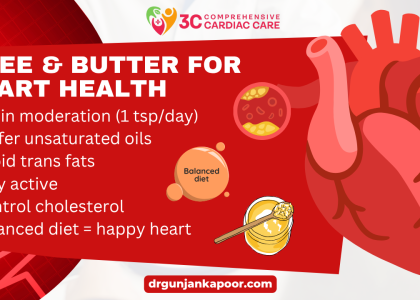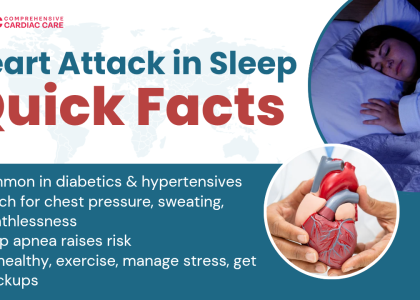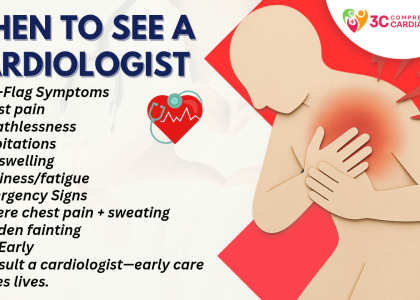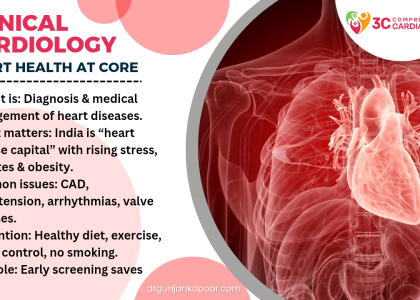Understanding Cholesterol: The Good, the Bad, and the Dangerous
When you hear the word cholesterol, do you immediately think “bad for the heart”? You’re not alone. But cholesterol isn’t all doom and gloom. In fact, some of it is essential for your body to function properly. Let’s break down the types of cholesterol—HDL, LDL, and triglycerides—and uncover how each one impacts your heart health ❤️.
What is Cholesterol Anyway?
Cholesterol is a waxy, fat-like substance found in every cell of your body. It’s used to build cell membranes, make hormones, and help your body digest foods. While your body makes all the cholesterol it needs, you also get some from the food you eat .
Too much cholesterol, however, can build up in your arteries and cause heart disease or stroke .
HDL: The “Good” Cholesterol
HDL stands for High-Density Lipoprotein, and it’s often called the “good” cholesterol.
Why is HDL Good?
HDL acts like a cleaning crew . It travels through your bloodstream, scooping up excess cholesterol and carrying it back to your liver, where it gets flushed out of your body.
Health Benefits:
✅ Reduces the risk of heart disease
✅ Helps prevent plaque buildup in arteries
✅ Anti-inflammatory properties
Ideal HDL Levels:
-
Men: 40 mg/dL or higher
-
Women: 50 mg/dL or higher
-
Best: 60 mg/dL and above for optimal protection
❌ LDL: The “Bad” Cholesterol
LDL stands for Low-Density Lipoprotein—the infamous “bad” cholesterol.
Why is LDL Bad?
LDL is like that person who clutters your space . It carries cholesterol to your arteries, where it can stick to the walls and form plaque. Over time, this narrows your arteries and restricts blood flow—a condition known as atherosclerosis .
Health Risks:
Increased risk of heart attack and stroke
Poor blood circulation
High blood pressure
Ideal LDL Levels:
-
Optimal: Less than 100 mg/dL
-
Near Optimal: 100–129 mg/dL
-
High Risk: 160 mg/dL and above
⚠️ Triglycerides: The Silent Danger
Triglycerides are another type of fat found in your blood . After you eat, your body converts any calories it doesn’t need right away into triglycerides.
Why Are High Triglycerides Dangerous?
If you regularly consume more calories than you burn—especially sugar and alcohol—your triglyceride levels can rise . High triglycerides can increase your risk of heart disease, pancreatitis, and even metabolic syndrome.
Ideal Triglyceride Levels:
-
Normal: Less than 150 mg/dL
-
Borderline High: 150–199 mg/dL
-
High: 200–499 mg/dL
-
Very High: 500 mg/dL or more
How Cholesterol Affects Your Heart
When bad cholesterol (LDL) and triglycerides are high, and good cholesterol (HDL) is low, your risk for cardiovascular disease skyrockets .
This unhealthy mix can:
-
Damage artery walls
-
Lead to heart attacks
-
Trigger strokes
-
Cause chest pain (angina)
That’s why monitoring and managing your cholesterol is non-negotiable for heart health.
Tips to Keep Your Cholesterol in Check
Ready to take charge of your numbers? Here are some heart-healthy habits :
Get Moving
Regular exercise boosts HDL and lowers LDL + triglycerides. Aim for 30 minutes of activity most days of the week.
Eat Smart
Focus on:
-
Fiber-rich foods (oats, beans, fruits )
-
Healthy fats (avocados, nuts )
-
Omega-3 fatty acids (salmon, flaxseed )
Cut back on: -
Saturated fats (red meat, full-fat dairy)
-
Trans fats (fried and processed foods)
-
Sugar and refined carbs (cookies, soda )
Quit Smoking
Smoking lowers HDL and increases your risk of heart disease. Ditch the habit for a stronger heart ➡️❤️.
Limit Alcohol
Too much alcohol raises triglycerides. Keep it moderate: 1 drink/day for women, 2 for men.
Check Your Levels
Get a lipid panel test at least once every 4–6 years—or more often if you have risk factors like diabetes, obesity, or family history.
Quick Infographic Summary (70 words):
HDL (“Good”): Clears cholesterol from arteries
LDL (“Bad”): Builds plaque in arteries ⚠️
Triglycerides: Stored fats that can spike heart risks
Balance = ❤️ health!
✅ Exercise
✅ Eat smart
✅ Quit smoking
✅ Monitor levels
A healthy heart starts with healthy cholesterol. Check your numbers and take action today!
Final Thoughts
Cholesterol doesn’t have to be confusing. Think of it like a team—some players help, some hinder, and some need coaching. By understanding the roles of HDL, LDL, and triglycerides, you can make smart choices for your heart’s MVP performance .
❤️ Stay active, eat clean, and keep your heart strong—because you only get one!









